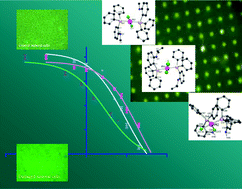The present paper examines one of the multiple uses of the CellScan technique, its utilization in the biological evaluation of novel compounds, in order to improve the methods concerning the prediction of their anti-proliferative effects and application as anti-cancer drugs. The CellScan is a laser scanning static cytometer, enabling repetitive spectroscopic measurements in intact living cells. The detection of cell viability and apoptosis is possible, based on the transformations that occur in the cytoplasm matrix of tumour cells influenced by cytotoxic compounds. The measurement of fluorescence changes, due to this phenomenon, is possible with the CellScan system. The potential of this technology to detect the in vitro effects of the inhibitory molecules on tumour cells was demonstrated, making this method a valuable tool for chemosensitivity tests. We synthesized and fully characterised three novel platinum complexes of tertiary arsine ligands: trans-[PtI2(2-iPrOC6H4AsPh2)2] (1), trans-[PtCl2(2-MeOC6H4AsPh2)2] (2) and cis-[PtCl2(2-HOC6H4AsPh2)2] (3). The three compounds are biologically active against tumour cells and their cytotoxicity is comparable with standard drugs. Measurements using the CellScan technology correlate well with the results provided by other bioassay methods.

You have access to this article
 Please wait while we load your content...
Something went wrong. Try again?
Please wait while we load your content...
Something went wrong. Try again?


 Please wait while we load your content...
Please wait while we load your content...